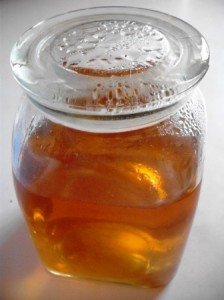

As anyone who has looked around this website will know, I use a lot of vinegar in my household cleaning, and also in personal care, and you may too if you’re implementing the spotless approach in your home. I often mention infusing the vinegar with citrus peels to boost its cleaning powers and improve its aroma, so today I’m going to talk a bit more about this citrus vinegar infusion: how to make it. Next time I’ll go into some of its many, many uses.
Along with its really impressive effectiveness as a cleaner (even more so than plain vinegar, which you know I am a fan of), the main attraction of making citrus vinegar is its lovely smell. I make a lot of infused vinegars (I’ve mentioned rose petal vinegar and lavender vinegar in previous posts), and this citrus one is possibly the most rewarding in that it takes on the citrus scent so readily, swiftly and completely. Finally, there is also the fact that it is so extremely simple to make.
How to make it
Really, it couldn’t be simpler. Put some citrus peels in a glass bottle or jar, cover the peels with vinegar and allow to soak for a few days.
You’ll be able to discern some citrus scent and power after even only half a day, but if you can wait for two weeks to use your infusion it will be an even bigger treat.
How many peels you use is up to you, depending on how strongly scented you want it and on how much peel you have available. I usually have at least one large jar that I have filled with peels, then covered with vinegar, busy infusing. I let this jar sit for two weeks (a warm spot is best), then strain it through a sieve and then again through a fine tea strainer. This makes a highly concentrated citrus vinegar that I generally use diluted with water (I’ll tell you more about its uses soon).
I also have another bottle of vinegar around the kitchen into which I put the peel of one lemon, or sometimes just one strip of peel. I use this for doing the dishes and it is very effective and pleasantly lemon-scented. Now and then when it’s empty I replace the peel.
All citrus peels work well: lemon, orange, grapefruit, lime, mandarin, and so on, and you can use any of them alone, or a combination of whatever you have available. It is often easiest to remove the skin first with a vegetable peeler or zester (this also makes the fruit easier to squeeze for juicing), but you can also use spent peels after squeezing out the juice for another use, or just peels you have removed by hand to eat a fruit. Try to avoid the inner fleshy pulp and use mainly the outer coloured part of the skin and the white pith.
That really is all there is to it. Citrus vinegar, like all vinegar, keeps well but if you are going to store it for a particularly long period, keep it in the fridge.
I’ll write about using it next time.
Interested in Advertising with Us?
Promote your brand and reach an engaged audience who values quality, sustainability, and healthy living.
Contact us to learn about our advertising opportunities.
CONTACT US